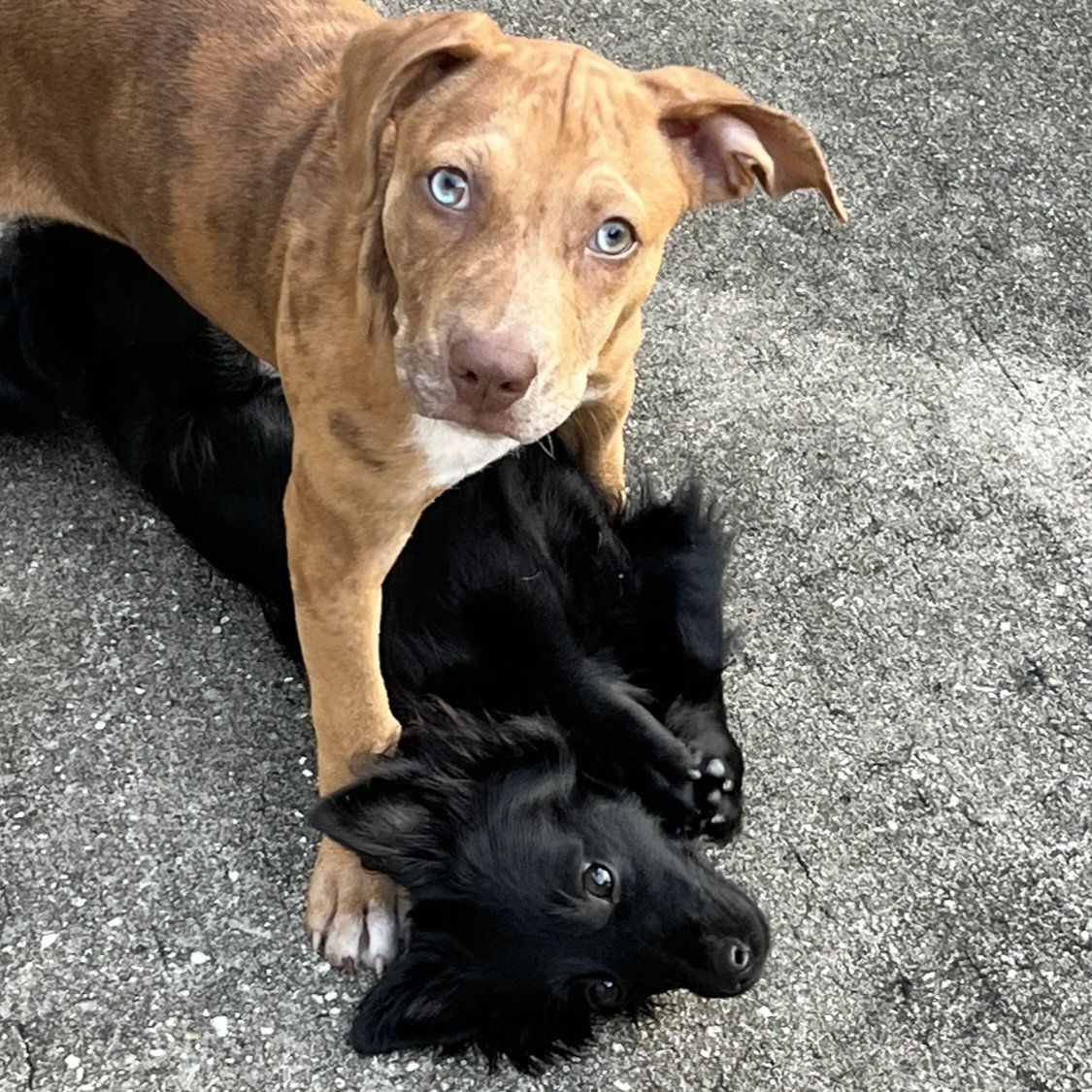How to Socialize Your Puppy
The goal of socializing your puppy is not to simply expose it to as many different things as possible. The goal is to build resilience. When socializing is done well, dogs can approach new experiences with confidence and enthusiasm and recover quickly from less-than-pleasant experiences.
Socialization
“Socialization” is one of those buzzwords people use frequently, but it doesn’t mean what most people think it means. For most, socializing your puppy, or even your adult dog, means simply taking them out and exposing them to different people and other dogs. Unfortunately, little thought is put into how the puppy experiences these exposures.
This oversimplification of what socialization is supposed to be often leads people to put their puppies in completely overwhelming situations, which ends up having the opposite of the intended result. Instead of becoming a confident and well-adjusted dog, the puppy becomes fearful of new experiences and reactive to people and other dogs.
Socializing your puppy means introducing your puppy to new experiences and making sure that those experiences are positive. You want your puppy to feel safe and happy during each new experience.
New experiences to introduce your puppy to:
Different sounds like traffic, kids playing, grooming equipment, etc.
Different surfaces, both inside and out, like grass, dirt, cement, tile, rugs, water, etc.
Different people and animals, with varying appearances (glasses, hats, beards, tattoos, different colored people) and abilities (people who limp, walk on crutches, wheelchair bound, etc).
Different locations, like stores, parks, and other peoples’ houses.
Different experiences like riding in a car or standing on a veterinary or grooming table.
Being left in the care of other people. (Make sure those people understand how to ensure your puppy’s experience is positive!)
Being left alone.
The goal of socializing your puppy
The goal of socializing your puppy is not simply exposing them to as many different things as possible. The goal is to build resilience. When socializing is done well, dogs can approach new experiences with confidence and enthusiasm and recover quickly from less-than-pleasant experiences.
To ensure your puppy’s experience is positive:
Meet your puppy’s needs first. Exposing your puppy to something new while they’re hungry, tired, or need to potty, may not be the best experience for them.
Make sure your puppy is showing confidence and enthusiasm during the experience.
Advocate for your puppy and end the experience if you see any signs of overwhelm or if your puppy indicates they’re not enjoying themselves.
Stop other people or dogs from interacting with your puppy if your puppy has indicated they don’t want to interact or want the interaction to end.
Encourage your puppy to participate in the experience without pushing them to participate.
Your puppy’s socialization window
With puppies, the window for socialization is small, between the ages of 3 and 12 weeks of age. If you acquired your puppy from a responsible breeder, they will have already started your puppy’s socialization before you bring them home, leaving you with just 2 to 4 more weeks to build on those experiences. If you got your puppy from anywhere else, you may have a lot more work to do to socialize them properly, and you may find yourself doing damage control from some not-so-great experiences.
During this socialization window, it’s important to introduce your puppy to the people who will be most involved in their life. This may include family and friends, vets and groomers, doggie daycare workers, dog walkers, and pet sitters. Make sure that your puppy spends extra time with these people and that their experiences with them are positive.
The Broaden & Build Theory
The Broaden and Build Theory suggests that when people feel positive emotions, their behavioral repertoire broadens. They are more likely to engage with the people around them, be open to new experiences, and be more creative. Furthermore, the theory suggests that experiencing positive emotions may also build psychological resilience.
When people feel negative emotions, their behavioral repertoire decreases. They are less likely to engage with the people around them, less likely to try new things, and their psychological resilience also decreases.
Though I don’t know of any specific research on the topic, I believe animals have similar experiences with positive and negative emotions. For example, a puppy with primarily positive experiences is more likely to greet other people and dogs enthusiastically, explore new environments without hesitation, and engage in play.
An animal who has had mostly negative experiences is less likely to do any of the above, and their behavioral repertoire can be reduced to purely defensive behaviors like growling, biting, running away, and hiding.
For this reason, when we think about socializing our puppies, we need to think less about exposing them to different dogs and people and more about making each new experience positive.
What if you miss the socialization window?
The advantage of resilience conditioning is that it can be done even after the socialization window has closed. Even if you have a puppy genetically predisposed to fear or anxiety, or you missed the socialization window, you can still build your puppy’s psychological resiliency and improve their outlook on life through carefully created positive experiences.
Read more about the broaden and build theory here:
https://www.ncbi.nlm.nih.gov/pmc/articles/PMC1693418/pdf/15347528.pdf
